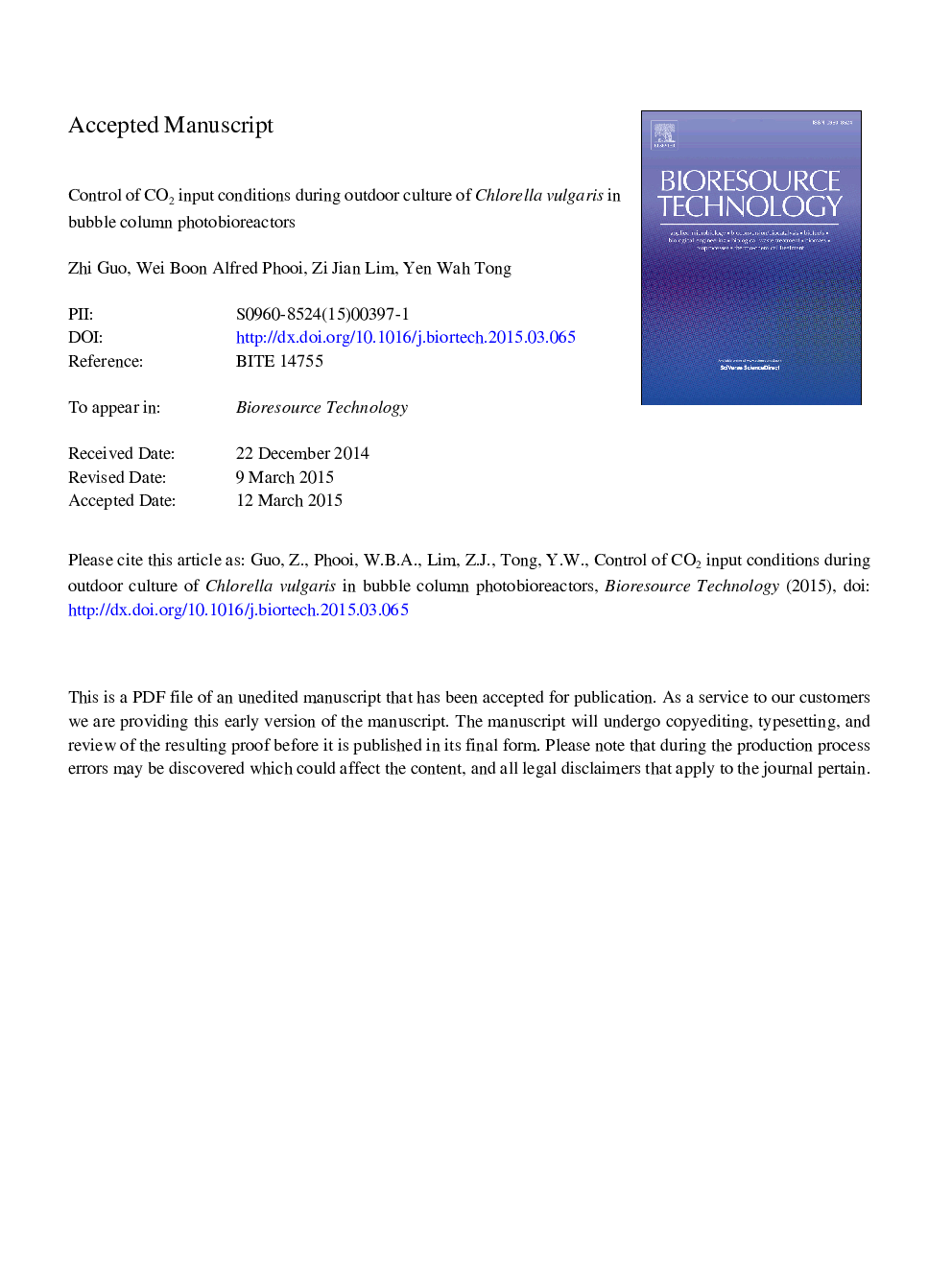| Article ID | Journal | Published Year | Pages | File Type |
|---|---|---|---|---|
| 7075147 | Bioresource Technology | 2015 | 37 Pages |
Abstract
A study on the optimization of CO2 usage during outdoor microalgae cultivation in order to further maximize the CO2 to biomass conversion efficiency is presented. A constant supply of CO2 was found to be non-essential for culturing microalgae outdoors in 80Â L (8Â LÂ ÃÂ 10 sets) bubble columns. Among the different CO2 input conditions that were studied, 2% CO2 with intermittent supply and 2%Â +Â 4% CO2 alternation did not affect the algal growth as compared to having a constant supply of 2% CO2. However, during both input conditions, the CO2 to biomass conversion efficiency was doubled while the amount of CO2 used was reduced by 50%. The algal biomass obtained was found to have a higher carbohydrate yield but a lower protein yield as compared to previously published studies. The findings from this study could be applied for large-scale microalgae production so as to minimize cultivation and energy costs.
Related Topics
Physical Sciences and Engineering
Chemical Engineering
Process Chemistry and Technology
Authors
Zhi Guo, Wei Boon Alfred Phooi, Zi Jian Lim, Yen Wah Tong,
